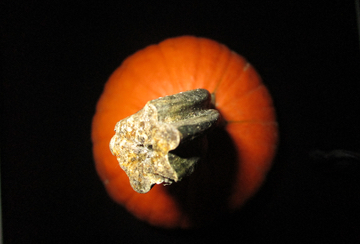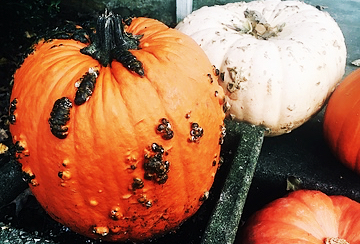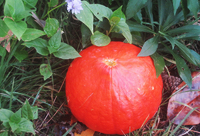
Best for Pie

The best pie pumpkins are small, no bigger than 2 lbs. Round and bright orange, with thick and sturdy stems, their flesh is both sweet and flavorful, and purees beautifully. The best variety is Baby Bear.
Next comes the Cinderella pumpkin, named after its striking similarity to the one in the cartoon. It features a wide, segmented, and flat shape, similar to a tufted pillow, and has a rich papaya red hue. Its flesh is sweet and not stringy, perfect for pie making.
The most commonly used squash in canned pumpkin puree is Dickinson squash, so you've probably already tried it and can confirm its excellent quality.
Jarrahdale, an Australian variety, has fruity golden flesh and pretty bluish skin, as beautiful as it is delicious.
For years, the small sugar pumpkin has been a top pick, perfect for both artistic endeavors and culinary creations.
You wouldn't think the warty and creepy looking Galeux d'Eysines, the peanut pumpkin, was a culinary delicacy just by looking at it: its delicate orange flesh is smooth with a taste reminiscent of sweet potato, perfect for soups and pies.

Most Unusual

To embrace the spirit of the season, let's begin with the Ghost pumpkin, a white variety that glows in the dark.
Next, with its green and black warts growing in layers over its orange skin, the Warty Goblin Pumpkin is sure to provide a spooky Halloween scare.
The Japanese Black Pumpkin is elegant with its medium-sized classic pumpkin shape and deep black color, complemented by smooth dark green ribbing.
Turkish Turban pumpkins resemble oversized orange mushrooms, with a combination of pumpkin and gourd characteristics.
The gourd portion is deeply indented and adorned with stripes ranging from chartreuse to dark orange.
Atlantic Giant Pumpkins were not supposed to be weird at all, it's just they grow so large they can't handle their own weight, flatten on the bottom and turn weird shapes like giant deflated beach balls.
You might mistake gooseneck pumpkins for gourds, if only they weren't so large: they can grow to 20 lbs.
And yes, I'll mention the Jarrahdale again, how could I not? Did I mention it's light blue? A light blue bona fide pumpkin. Mother Nature is nothing if not creative.
